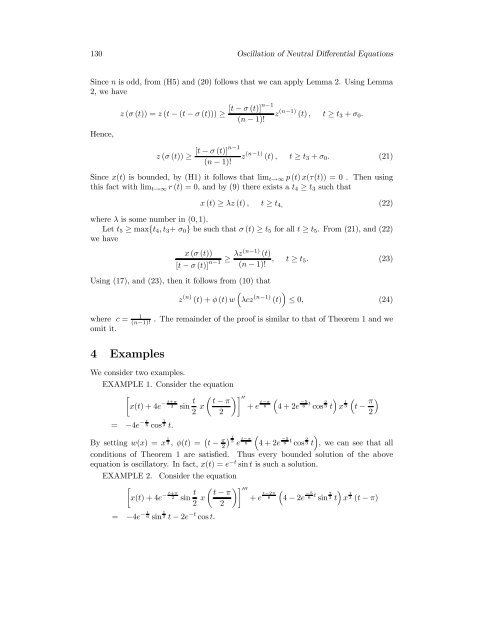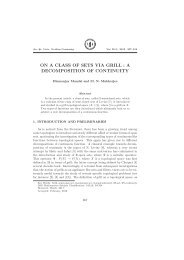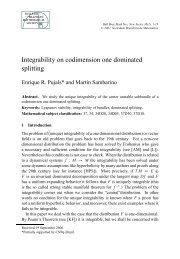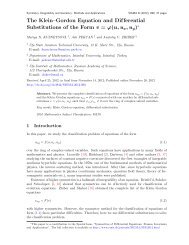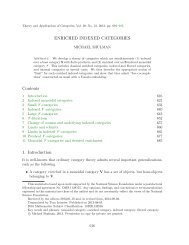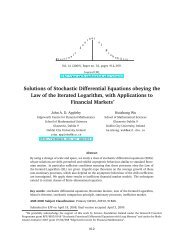Bounded Oscillation Of Higher Order Neutral Differential Equations ...
Bounded Oscillation Of Higher Order Neutral Differential Equations ...
Bounded Oscillation Of Higher Order Neutral Differential Equations ...
Create successful ePaper yourself
Turn your PDF publications into a flip-book with our unique Google optimized e-Paper software.
130 <strong>Oscillation</strong> of <strong>Neutral</strong> <strong>Differential</strong> <strong>Equations</strong>Since n is odd, from (H5) and (20) follows that we can apply Lemma 2. Using Lemma2, we haveHence,z (σ (t)) = z (t − (t − σ (t))) ≥[t − σ (t)]n−1z (n−1) (t) , t ≥ t 3 + σ 0 .(n − 1)![t − σ (t)]n−1z (σ (t)) ≥ z (n−1) (t) , t ≥ t 3 + σ 0 . (21)(n − 1)!Since x(t) isbounded,by(H1)itfollowsthatlim t→∞ p (t) x(τ(t)) = 0 . Then usingthis fact with lim t→∞ r (t) = 0, and by (9) there exists a t 4 ≥ t 3 such thatx (t) ≥ λz (t) , t ≥ t 4, (22)where λ is some number in (0, 1).Let t 5 ≥ max{t 4 ,t 3 + σ 0 } be such that σ (t) ≥ t 5 for all t ≥ t 5 . From (21), and (22)we havex (σ (t))[t − σ (t)] n−1 ≥ λz(n−1) (t),(n − 1)!t ≥ t 5 . (23)Using (17), and (23), then it follows from (10) that z (n) (t)+φ (t) w λcz (n−1) (t) ≤ 0, (24)where c = 1omit it.(n−1)!. The remainder of the proof is similar to that of Theorem 1 and we4 ExamplesWe consider two examples.EXAMPLE 1. Consider the equationx(t)+4e − t+π2 sin t t − π2 x + e t−π62 4+2e −56 t cos 2 3 t x 1 3 t − π 2= −4e − t 16 cos 3 t.By setting w(x) =x 1 3 , φ(t) = t − π 132e t−π6 4+2e −56 t cos 2 3 t ,wecanseethatallconditions of Theorem 1 are satisfied. Thus every bounded solution of the aboveequation is oscillatory. In fact, x(t) =e −t sin t is such a solution.EXAMPLE 2. Consider the equationx(t)+4e − t+π2 sin t t − π2 x 2= −4e − t 6 sin13 t − 2e −t cos t. + e t−2π64 − 2e −56 t sin 2 3 tx 1 3 (t − π)


